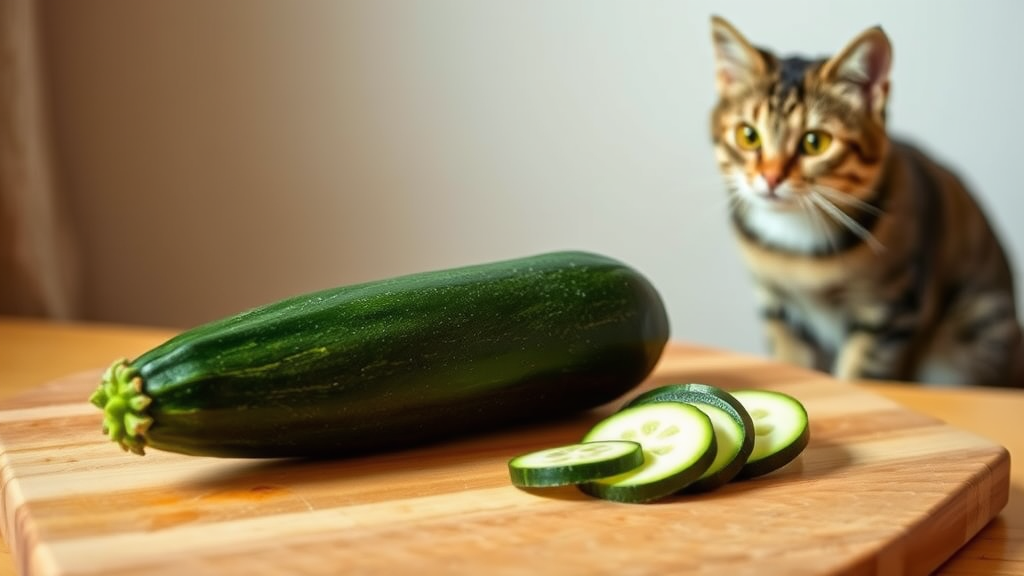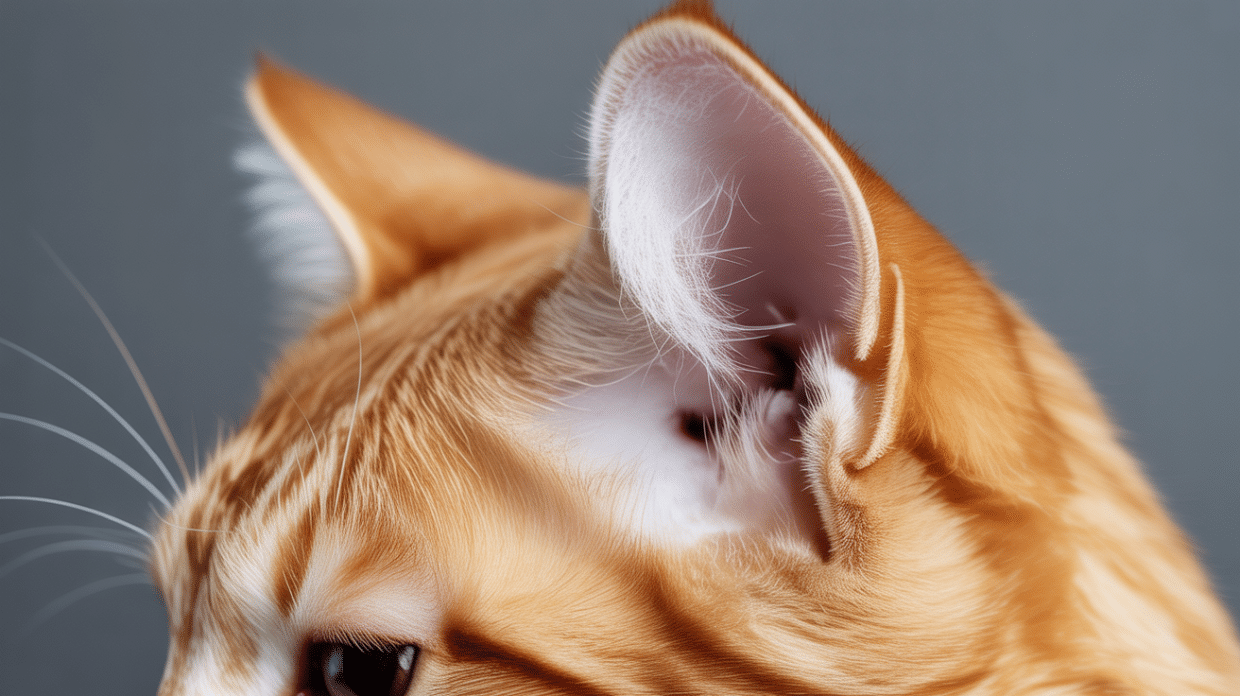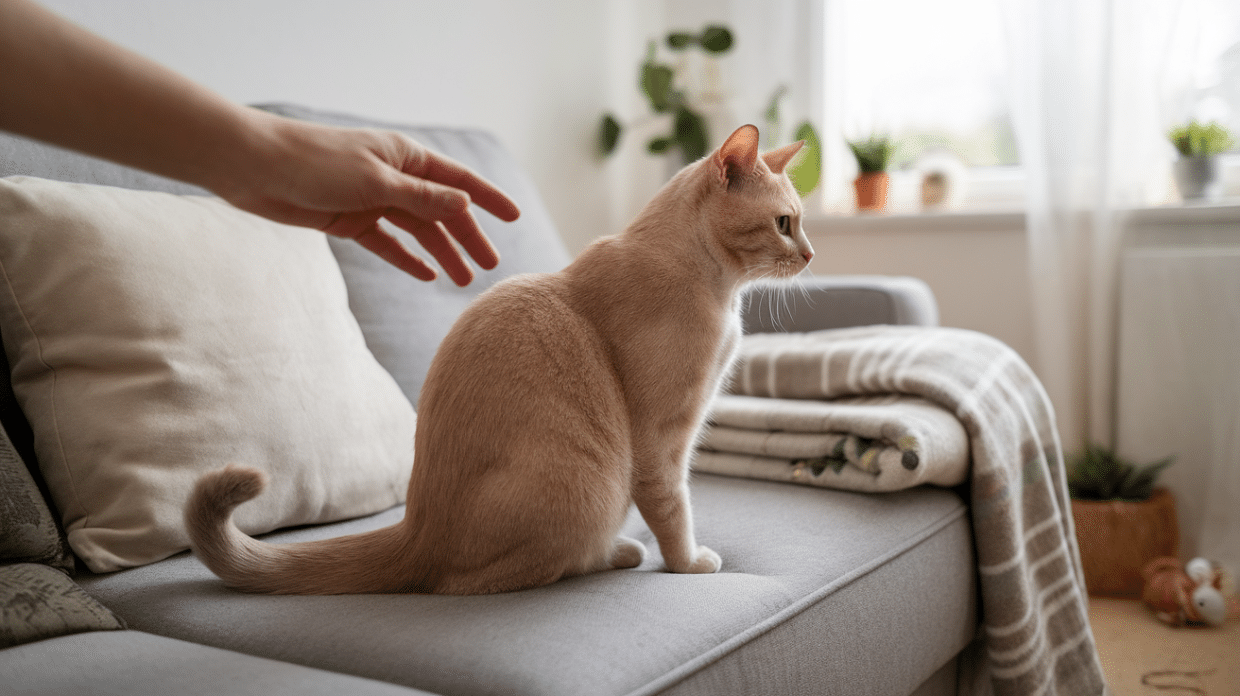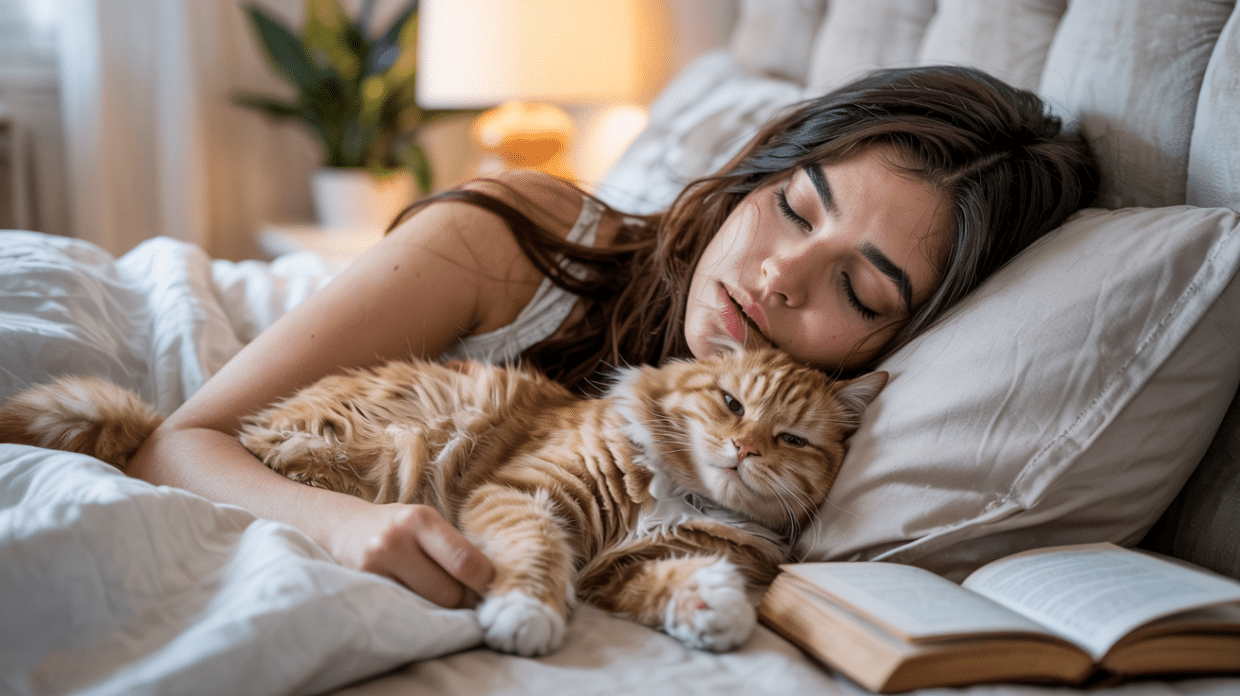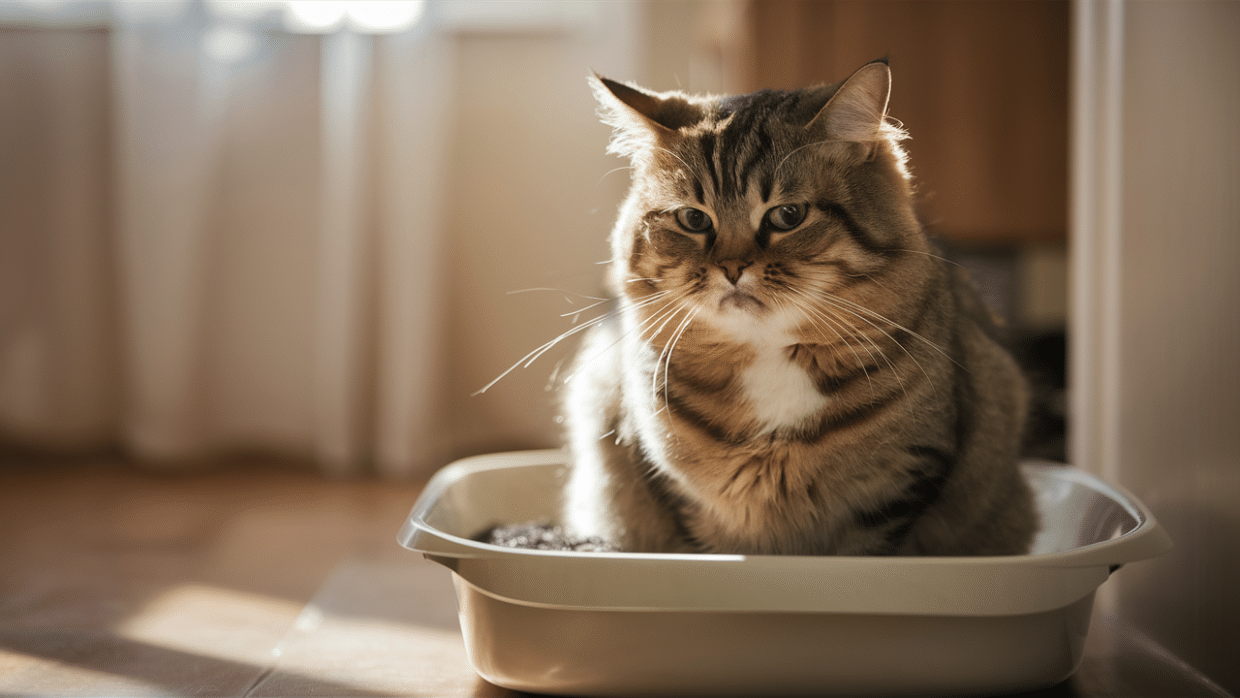Can cats eat zucchini? You might be surprised by the answer.
While cats are naturally meat lovers, many owners wonder if veggies like zucchini are safe and even helpful for their furry friends.
The truth is, zucchini can offer some health benefits when fed the right way.
In this blog, you’ll learn why zucchini might be a smart, low-calorie treat for your cat. We’ll break down its benefits, how to serve it safely, how much to give, and when to avoid it.
If you’re looking to boost your cat’s diet with healthy options or manage their weight without cutting flavor, you’re in the right place.
Let’s see if this green veggie belongs in your cat’s bowl and how to make it work.
What Cats Need to Eat
Cats are obligate carnivores, which means they must eat meat to survive. Their bodies require specific nutrients like taurine and arachidonic acid, which are found only in animal tissue.
Without these nutrients, cats can develop serious health problems.
While cats don’t need vegetables, small amounts can provide fiber and some vitamins.
However, meat should always be the main component of their meals. Think of vegetables as optional extras rather than essential parts of their diet.
Health Benefits of Zucchini for Cats
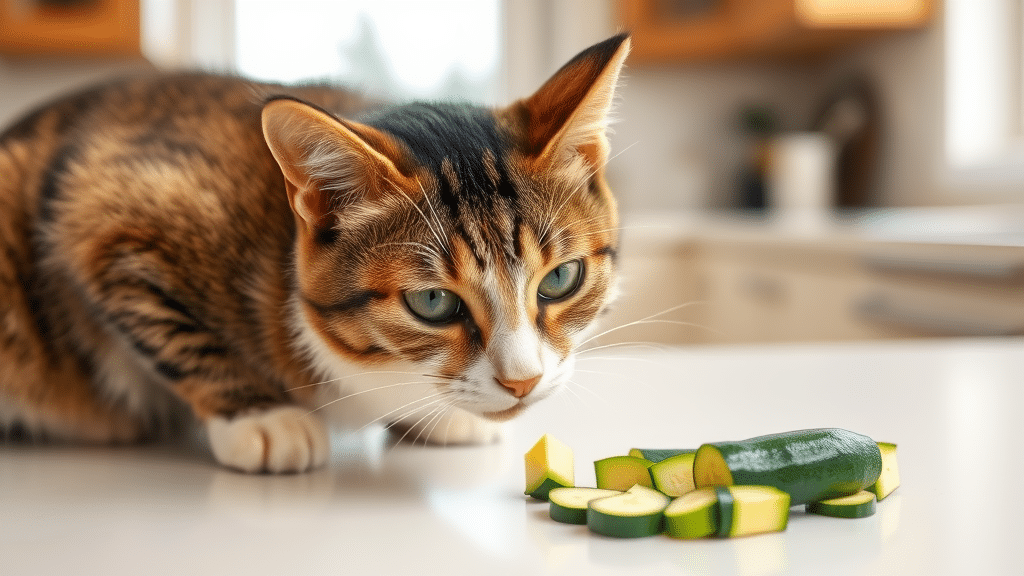
Yes, cats can eat zucchini in small amounts. It’s safe and offers several health benefits as an occasional treat. As covered below, it can benefit them in many ways.
1. Antioxidants
Zucchini contains antioxidants that help fight harmful molecules called free radicals in your cat’s body. These compounds can help reduce cell damage and may support your cat’s immune system and overall health.
2. Fiber
The fiber in zucchini can help your cat’s digestion and gut health. It supports regular bowel movements, can help prevent hairballs, and promotes good bacteria in the digestive system.
3. Magnesium & Potassium
Zucchini provides minerals like magnesium and potassium that cats need. These minerals help with nerve function, muscle control, and heart health. They also play a role in keeping your cat’s energy levels steady.
4. Low Calories
Zucchini has very few calories, making it good for cats who need to lose weight. You can use small bits of zucchini as treats instead of high-calorie options to help manage your cat’s weight.
How to Safely Feed Zucchini to Your Cat
Learn the best ways to prepare and serve zucchini to your cat. Keep your feline safe while adding this veggie to their diet.
Raw vs. Cooked Zucchini: Pros and Cons
Raw zucchini keeps more natural enzymes and nutrients intact and offers a crunchy texture that some cats enjoy. It’s also quick to prepare, wash, and cut.
However, raw zucchini can be harder for cats to digest and may pose a choking hazard if not cut small enough.
Cooked zucchini is softer and easier for cats to digest, making it better for those with sensitive stomachs. The cooking process also reduces choking risks.
The downside is that cooking destroys some nutrients and requires more preparation time. Consider your cat’s needs and preferences when choosing which option works best.
Preparation Methods
How to prepare zucchini for your cat:
- Wash thoroughly to remove pesticides or dirt
- Remove seeds if your cat has a sensitive stomach
- Cut into tiny, bite-sized pieces (pea-sized) to prevent choking
- Shred with a grater for easier mixing with other foods
- Steam until soft for easier digestion
- Avoid using oils, salt, spices, or seasonings
- Let it cool completely before serving
How Much to Serve
Start with a small pinch (about 1/4 teaspoon) and watch for digestive issues. Gradually increase to no more than one teaspoon for small cats or one tablespoon for larger cats, given 2-3 times weekly at most.
Mix tiny amounts with your cat’s regular food at first. If refused, try a different texture – some cats prefer shredded, while others like small cubes.
Be patient, and don’t force it if your cat shows no interest.
Potential Risks and Precautions
Watch for signs of allergic reactions in your cat, including itching, swelling, vomiting, or diarrhea after eating zucchini. Stop feeding zucchini and talk to your vet if you notice these symptoms.
Feed zucchini in small amounts only. Too much can cause an upset stomach, gas, or diarrhea because cats’ digestive systems are made mainly for meat.
When to avoid giving zucchini:
- Cats with kidney disease may need limited minerals
- Cats with very sensitive stomachs or IBD
- Cats already showing signs of digestive issues
- Cats on special diets prescribed by vets
Safe Fruits and Vegetables for Cats
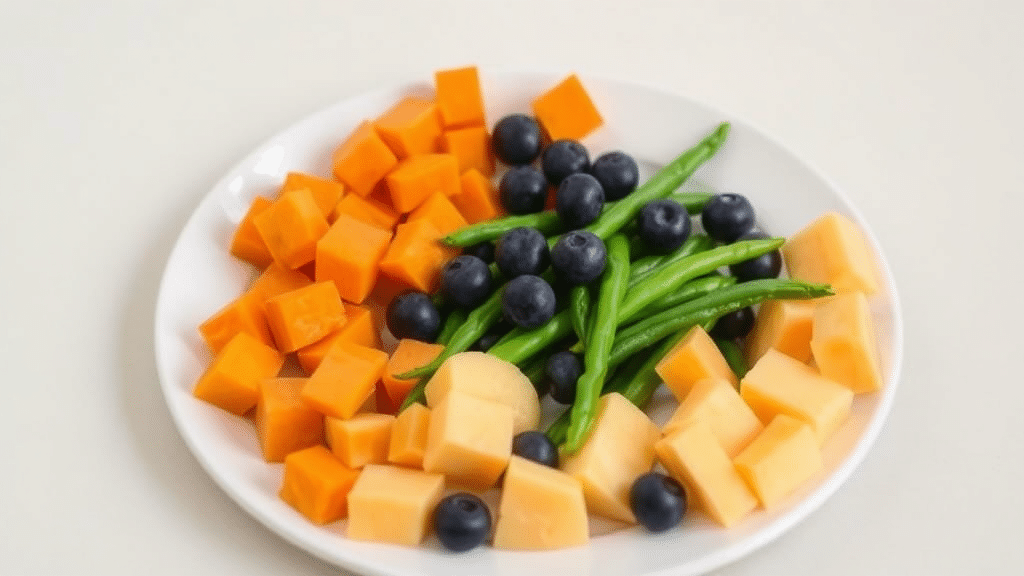
1. Pumpkin
Plain cooked pumpkin is a great addition to your cat’s diet. It’s high in fiber, which aids digestion and can help with constipation or diarrhea.
Many cats enjoy its mild, slightly sweet taste. Serve it plain, without added spices or sugar.
2. Carrots
Cooked carrots are a good source of beta-carotene and fiber, which are beneficial for your cat’s health. The natural sweetness of carrots makes them appealing to many cats.
You can mash the carrots or cut them into small, bite-sized pieces for easy consumption.
3. Blueberries
Blueberries are small but packed with antioxidants, vitamins, and fiber, which can support your cat’s immune system and overall health.
Many cats enjoy the sweet, slightly tart flavor of blueberries. They can be given fresh or frozen as an occasional treat in small amounts.
4. Green Beans
Steamed green beans are an excellent source of fiber and essential nutrients while being low in calories.
This makes them a great snack for cats, especially for those on weight management plans. Green beans also help cats feel fuller for longer, promoting satiety without excess calories.
5. Cantaloupe
Cantaloupe is a sweet, fragrant melon that many cats find intriguing due to its distinct smell. It’s packed with moisture and provides vitamins, making it a hydrating treat.
However, due to its sugar content, it’s important to offer cantaloupe in moderation to avoid overloading your cat’s diet with sugars.
Wrapping Up
When given in small amounts, zucchini can be a safe, healthy treat for cats. It offers fiber, minerals, and antioxidants and is low in calories, which is great for digestion and weight control.
But remember, cats still need meat as their main food source. Think of zucchini as a bonus, not a replacement.
Always start slow, watch for any bad reactions, and keep your cat’s unique needs in mind.
Looking to learn more about what your cat can and can’t eat? Check out our other helpful guides on our website to keep your feline friend happy and healthy.
Frequently Asked Questions
What Vegetables Can Cats Not Eat?
Cats should never eat onions, garlic, chives, leeks, shallots, spring onions, or pickled vegetables. These can cause serious blood cell damage.
What Is The Most Toxic Thing a Cat Can Eat?
Chocolate, onions, garlic, grapes, alcohol, raw dough, dairy, citrus, and raw potatoes can all poison cats.
What Is The Safest Human Food for Cats?
Plain cooked chicken, turkey, or beef without bones, skin, or seasoning is the safest human food for cats.

